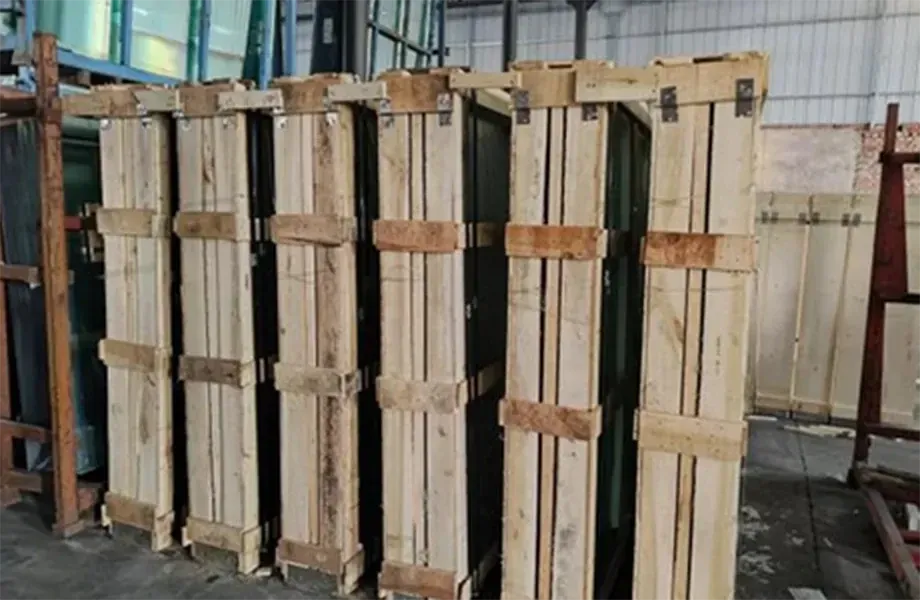Dec . 06, 2024 19:34 Back to list
annealed float glass
The Versatility and Advantages of Annealed Float Glass
Annealed float glass is a widely used material in the construction and manufacturing industries, prized for its clarity, flatness, and affordability. This type of glass is produced through a unique manufacturing process that involves floating molten glass on a bed of molten tin. This method results in a sheet of glass that is uniform in thickness and free from distortions, making it an ideal choice for a variety of applications.
One of the most significant benefits of annealed float glass is its exceptional optical clarity. The process of floating the glass creates a smooth, flat surface that allows for maximum light transmission. This optical quality makes it a preferred material for windows, doors, and facades, where natural lighting is essential. Additionally, its clarity allows for a true representation of colors and shapes, which is crucial for applications in display cases, mirrors, and even photography.
In terms of physical properties, annealed float glass is known for its stability and durability under normal conditions. While it is not as strong as tempered or laminated glass, it is sufficient for many everyday applications. The standard thickness of annealed float glass typically ranges from 2 mm to 19 mm, providing a level of strength that is adequate for residential and light commercial use. Homeowners often choose it for windows and glass doors due to its cost-effectiveness compared to other types of glass.
However, the use of annealed float glass does come with some limitations. One of the primary concerns is its susceptibility to thermal stress. Sudden changes in temperature can lead to breakage, which is a significant consideration in areas that experience extreme weather variations. While this vulnerability can be mitigated by careful installation and treatment, such as applying low-emissivity (Low-E) coatings, it is still an important aspect for consumers to consider.
annealed float glass

Safety is another vital issue associated with annealed float glass. In its standard form, it shatters into sharp shards when broken, posing a risk of injury. For this reason, it is often used in locations where the likelihood of breakage is minimal. However, when safety is a concern, alternatives such as tempered or laminated glass are often recommended. These safety glasses undergo processes that increase their strength and alter their breakage pattern, making them safer for use in areas where impact is likely.
Despite its limitations, the aesthetic appeal of annealed float glass cannot be overlooked. It is highly customizable, allowing for various treatments, coatings, and colors. Manufacturers can apply tints, frosts, or textures to enhance both the functional and visual properties of the glass. These customizations make it a versatile choice for architects and designers seeking to create unique visual statements in their projects.
Moreover, annealed float glass is an environmentally friendly option due to its recyclability. Glass is one of the few materials that can be recycled indefinitely without losing quality. This aspect aligns well with the growing demand for sustainable building materials as more individuals and companies strive to reduce their environmental footprints.
In conclusion, annealed float glass remains a prominent choice in various sectors due to its clarity, affordability, and versatility. While it is essential to be aware of its limitations, such as susceptibility to thermal stress and safety concerns, its aesthetic qualities and eco-friendly nature offer significant advantages. As technology progresses, it is likely that further innovations will continue to enhance the properties of annealed float glass, solidifying its position in the construction and manufacturing markets for many years to come. Whether used in residential windows or commercial buildings, annealed float glass continues to serve as a valuable material in modern architecture and design.
-
Safety and Style with Premium Laminated Glass Solutions
NewsJun.24,2025
-
Reinvents Security with Premium Wired Glass
NewsJun.24,2025
-
Premium Float Glass Line for Modern Architecture
NewsJun.24,2025
-
Low Emissivity Glass for Energy-Efficient Architecture
NewsJun.24,2025
-
High-Performance Insulated Glass Solutions for Modern Architecture
NewsJun.24,2025
-
Elevates Interior Style with Premium Silver Mirror
NewsJun.24,2025
Related PRODUCTS














